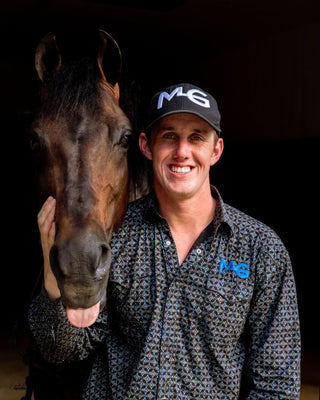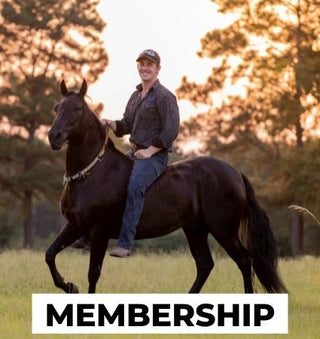Watch the Video Here or continue reading below!
Hey, horse enthusiasts! Michael Gascon, The Horse Guru, here. Today, we're diving into a fundamental yet often overlooked aspect of horsemanship: using your hands on the reins effectively. This technique is critical to clear communication with your horse and achieving precise movements. Let's break it down into three simple rein buttons.
The Importance of Simplicity in Communication
One of the reasons our training method is so effective is its simplicity. Horses respond well to clear, consistent cues. By using just three rein buttons, we can control their movements effectively without overwhelming them.
Understanding the Three Rein Buttons
1. The Flexion Button (Flexing the Head)
The first button is flexion, which controls the horse’s head. Before we can control the hindquarters or shoulders, we must first gain control of the head. Here’s how:
-
Stay back in your command post (don’t lean forward to grab the reins).
-
Use one hand to bring the reins toward you while the other hand slides down to find the horse’s face.
-
Gently pull their face toward the seam of your jeans or your pocket.
-
Keep your body straight and square.
-
Release the rein when the horse responds correctly.
Flexion is the foundation for all other movements, setting the stage for more advanced maneuvers.
2. The Hindquarter Disengagement Button
Once we have control of the head, we move to disengaging the hindquarters. This technique is crucial for stopping, slowing down, and gaining lateral movement. Here’s how to do it:
-
Use the same hand movement as flexion to find the horse’s face.
-
Shift your focus and body towards the inside hip bone of your horse.
-
Bring your rein hand towards that hip bone to create a twisting motion.
-
Keep your free hand available (it can rest on the saddle horn for balance).
-
Avoid using both reins simultaneously, as this sends mixed signals.
By disengaging the hindquarters, we can either slow the horse down in a controlled manner or completely stop them in an emergency.
3. The Shoulder Control Button
The final button is moving the shoulders. This skill is essential for fine-tuning direction and achieving better balance in your horse. Here’s how:
-
Bring the horse’s face towards its shoulder.
-
Look at the shoulder to direct your intention.
-
Use your free hand to guide the rein and indicate direction.
-
Ensure the horse is moving forward while also stepping sideways.
This maneuver helps create softness in the shoulders and improves overall agility.
One Rein Stop vs. Hindquarter Disengagement
A one-rein stop is an emergency measure where you pull the rein until the horse halts completely. The difference between this and disengaging the hindquarters is the energy you add. When disengaging, you keep the horse moving with light rein pulsations or verbal encouragement. However, in a one-rein stop, all forward movement ceases immediately.
Applying the Three Buttons to Any Horse
The beauty of this method is that it applies to any horse breed—whether you ride a Fjord, Warmblood, Tennessee Walker, Paso Fino, Peruvian, or even a pony! Keeping cues simple ensures that any horse can understand them quickly and efficiently.
Conclusion
By mastering these three rein buttons—flexion, hindquarter disengagement, and shoulder movement—you can communicate more effectively with your horse. This simple yet powerful technique improves responsiveness, control, and safety in the saddle.









